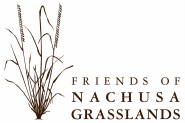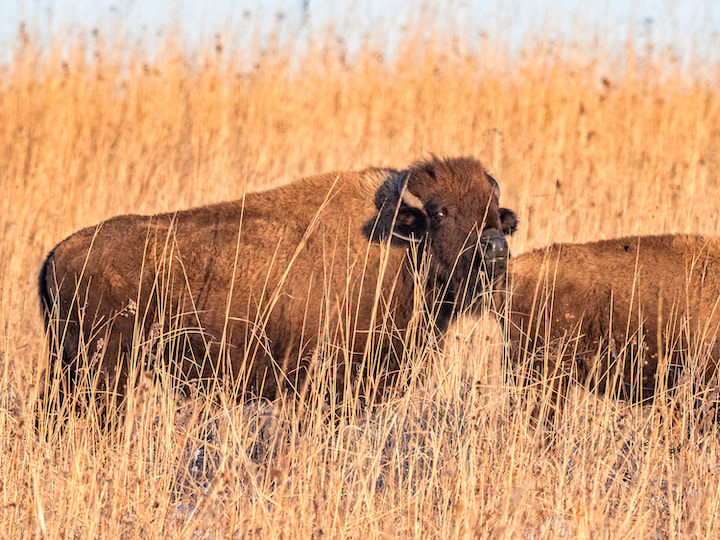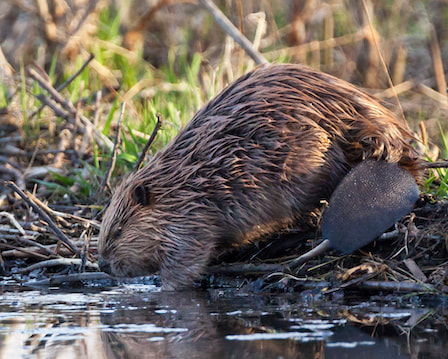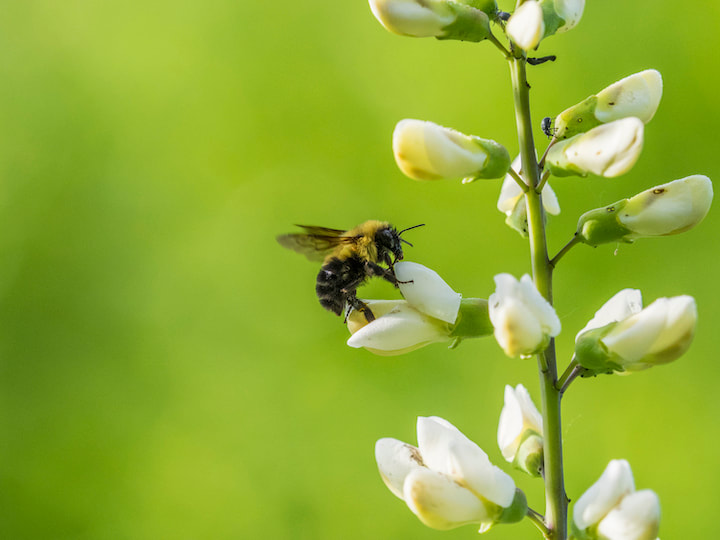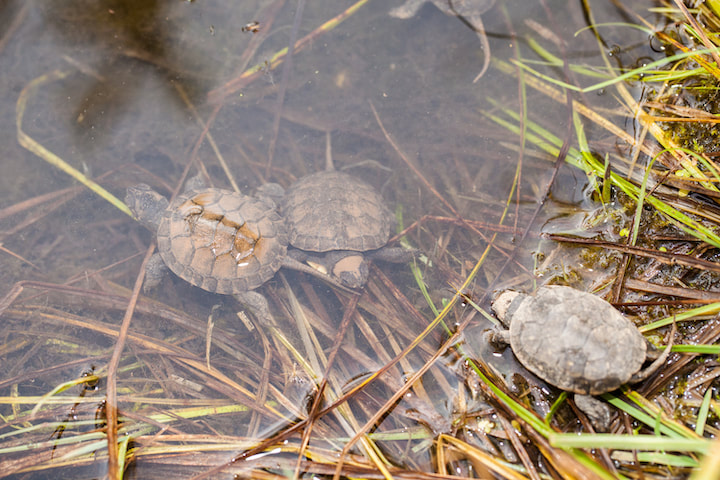Friends of Nachusa Grasslands 2022 Scientific Research Grants – $66,000
To support scientific endeavors, Friends of Nachusa Grasslands awards monetary grants to qualified candidates conducting scientific research significant to Nachusa Grasslands.
Research projects focus primarily on prairie, savanna, wetland, woodland, and stream habitat management, such as prescribed fire, seed collection, weed control, general or specific flora or faunal populations, and natural areas restoration.
Thanks to a 1:1 challenge grant and the generous support of individual donors, organizations, and foundations, Friends has awarded $66,000 for 2022-2023, divided in varying amounts among thirteen researchers.
Research projects focus primarily on prairie, savanna, wetland, woodland, and stream habitat management, such as prescribed fire, seed collection, weed control, general or specific flora or faunal populations, and natural areas restoration.
Thanks to a 1:1 challenge grant and the generous support of individual donors, organizations, and foundations, Friends has awarded $66,000 for 2022-2023, divided in varying amounts among thirteen researchers.
Donations to Friends can be designated to Scientific Research Grants.
2022 Grant Recipients, Projects, and Amounts
Scientific Research Grant Reports are linked to each project title.
|
Jennifer Bell, PhD, Morton Arboretum. “Arbuscular Mycorrhizal Community Structure in a Chronosequence of Tallgrass Prairie Restoration.” Using techniques of DNA extraction, PCR, and DNA sequencing, Dr. Bell will be examining the diversity and abundance of symbiotic fungi (arbuscular mycorrhizal fungi, AMF) present in soil samples taken over the course of several years from remnant sites and restorations of various ages at both Nachusa and the Morton Arboretum. The two goals of the study are to determine if 1) AMF community structure eventually mirrors that of remnant sites, and 2) if the AMF community is site specific. The role of AMF in restoration efforts has become an increasingly important focus in restoration science. $4,750
Kathryn Bloodworth, PhD candidate, University of North Carolina at Greensboro. “Fire Effects on Multiple Ecosystem Outcomes: A Meta-Analysis for the Land Managers of Tallgrass Prairie.” This grant supports the second year of a comprehensive three-year effort to understand the role of fire frequency in conserving multiple ecosystem outcomes including but not limited to its effects on birds, insects, small mammals, soil characteristics, woody plants, grasses, and forbs across a wide variety of settings (including Nachusa Grasslands) in the tallgrass prairie region. This analysis should provide land managers with information they need to make vital decisions on ire frequency for specific desired outcomes. $4,873 (in 2022). Reb Bryant, PhD candidate, The University of Kansas. “Testing the Effect of Native Arbuscular Mycorrhizal fungi (AMF) on Prairie Restoration Success at Nachusa Grasslands.” The goal of this three-year project is to study the question of whether or not the inoculation of specific native arbuscular mycorrhizal fungi (AMF) into the soil of greenhouse grown plants can facilitate the plant abundance of “hard-to-establish” plant species in prairie restorations. If successful, this work may provide a “library” of AMF cultures that can be used to increase biodiversity in future restorations. $14,525 (paid in full in 2021). Multi-Year Funding Status Report 2022 Molly Carlson, MS candidate, University of Illinois at Urbana-Champaign. “A survey of crayfishes of Nachusa Grasslands with effects of tallgrass restoration on burrowing crayfish presence/abundance.” Burrowing crayfish populations are both understudied and severely threatened worldwide even though crayfish play significant ecological roles. This grant supports a comprehensive survey of Nachusa’s crayfish under the supervision of Illinois Natural History Survey astacologists Dr. Chris Taylor and field researcher Dusty Swedberg while at the same time collecting data on local habitat parameters (eg. stem density, canopy cover, distance to water, etc.) at each identified burrow. The resulting baseline data will provide future direction for measuring the effects of prairie management on burrowing crayfish. $4,500. Robert Jean, PhD, Environmental Solutions and Innovations. “Community dynamics, flower preferences, and parasite loads of native bees and domesticated honey bees at Nachusa Grasslands.” This study will investigate the differences in bee community composition, floral preferences, and parasite loads of native bees and domesticated honey bees at various distances from a large honey bee aggregation/apiary located adjacent to Nachusa Grasslands. This study may shed some light on what effect (if any) domesticated bees have on native bee populations (including the federally endangered Rusty Patched Bumble Bees residing at Nachusa.) $8,200. Richard King, PhD., Northern Illinois University, Thomas B. Anton and David Mauger, Independent researchers. “Head-Starting: A New Phase in Blanding’s Turtle Management at Nachusa Grasslands.” This grant supports the ongoing effort to increase the population and promote the persistence of the state-endangered Blanding’s Turtles at Nachusa and adjacent properties within the Franklin Creek corridor. This work is part of the state-wide Blanding’s Turtle conservation effort led by IDNR. In addition to tracking newly released “head-start” hatchlings to obtain data on their survival, movements and habitat use, this research team will track adult females to their nest sites and collect eggs for head-starting at Willowbrook Wildlife Center and their later release at both Nachusa Grasslands and Richardson Wildlife Foundation. $4,750. Joshua Klostermann, PhD candidate, University of Missouri. “Understanding the Role of Bison Wallows on the Bee and Wasp Communities of Nachusa Grasslands.” Previous work on the native bee populations at Nachusa led to the discovery that several rare and uncommon species of bees and a diverse aggregation of ecologically important ground-nesting wasp species use the wallows created by the preserve’s bison. Using collected soil data, emergence trap data, and careful observation, this study will take a closer look at these species, their behaviors, and the interactions between the different species using the wallows. This work may in time influence management decisions regarding these habitats. $9,500. |
Gavin McNicol, PhD, University of Illinois at Chicago. “Effects of ecological management on native ecosystem soil-climate interactions.” Using a variety of methodologies, Dr. McNicol will measure 1) soil carbon concentrations and stocks, 2) greenhouse gas emissions (carbon dioxide, methane, and nitrous oxide), and 3) soil microbial diversity and community composition in specific prairie, woodland, and wetland units at Nachusa with different histories of management. The goal is to gain insight into the role various ecosystems and their management play in climate regulation. $6022.
Erin Rowland-Schaefer, PhD candidate, Northern Illinois University. “Quantifying Burns: Using Drones to Numerically Assess the Success of Prescribed Burns.” The final year of this three-year grant will support the completion of the drone imagery work being done to quantify the amount of any given unit actually burned during a prescribed fire event as well as the pattern and intensity of the fire. The imagery is also being used to develop a comprehensive land cover map of the preserve. Additionally, the ongoing monitoring of small mammal populations in burn areas is shedding light on the impact of prescribed fire on those species dependent on specific land cover. Two research papers compiling data from this study have already been submitted for publication. $3,400 (in 2022). Jesse Sikora, MS candidate, Northern Illinois University. “Measuring Beaver Dams and Their Impacts at Nachusa Grasslands.” This project is a follow up to the work done last year collecting baseline data on beaver activity at Nachusa. Last year’s work identified and mapped 153 beaver dams on the preserve; 80 of them were along flowing streams. This year, Ms. Sikora and her assistant will measure upstream and downstream discharge rates, water retention, and suspended sediment at 15 randomly selected dams to quantify their impact on the streams. Beaver activity on the dams will be quantified by measuring beaver dam volume and beaver-created stump production, and by analyzing motion-triggered camera trap footage. $6,000. Laurie Spencer, PhD candidate, Northern Illinois University. “Assessment of Enteric Parasites in Wild Bison at Nachusa Grasslands.” Using microscopic analysis, PCR, and DNA sequencing, this ongoing study will measure the prevalence and abundance of intestinal parasites in Nachusa’s bison herd from new and previously collected fecal samples. Infection differences across variables such as age, sex, sample year, diet composition, and climate conditions will also be assessed. Collected data may prove useful in developing both herd management strategies and future veterinary health interventions. $2,710. Matt von Konrat, PhD and Todd Widhelm, PhD, Field Museum. “Uncovering Hidden Diversity of Nachusa Grasslands: Insights in the Cryptobiotic World of Bryophytes and Lichens.” Lichens and bryophytes (mosses, liverworts, and hornworts) play a major ecological role and serve as early indicators of global warming, but they have never been studied at Nachusa. Drs. Von Konrat and Widhelm will lead a diverse team of specialists who will complete an inventory of these organisms at the preserve and selected natural areas nearby. A resulting checklist of the area’s lichens and bryophytes, a color guide and downloadable pdfs of common species, and digitized label data and images of selected species will help the preserve’s managers, volunteers, scientists, and visitors increase their knowledge about these understudied organisms and perhaps influence future management decisions. $6,725. Cariad Williams, PhD candidate, University of Illinois at Urbana-Champaign. “Exploring the diversity of singing orthoptera at Nachusa Grasslands using non-destructive acoustic surveying techniques.” This grant supports the use of audio recorders and cluster analysis software to survey and compile a more complete list of the “singing” crickets, katydids, and stridulating grasshoppers found in different habitats of Nachusa. This study builds on the work done by Dr. Sam Heads (Illinois Natural History Survey) in 2011/12 using active collection techniques. A secondary goal of the project is to hopefully relocate the velvet-striped grasshopper (Eritettix simplex) first discovered by Dr. Heads at Nachusa. It is listed as a “Species in Greatest Conservation Need” in the Illinois Wildlife Action Plan. $4,570. To receive information about the 2023 grant guidelines and application process that will be available in the late summer, contact [email protected]. |
Past research projects supported by the Friends are listed on each year's Science Grants page:
UPDATED 07/2023
